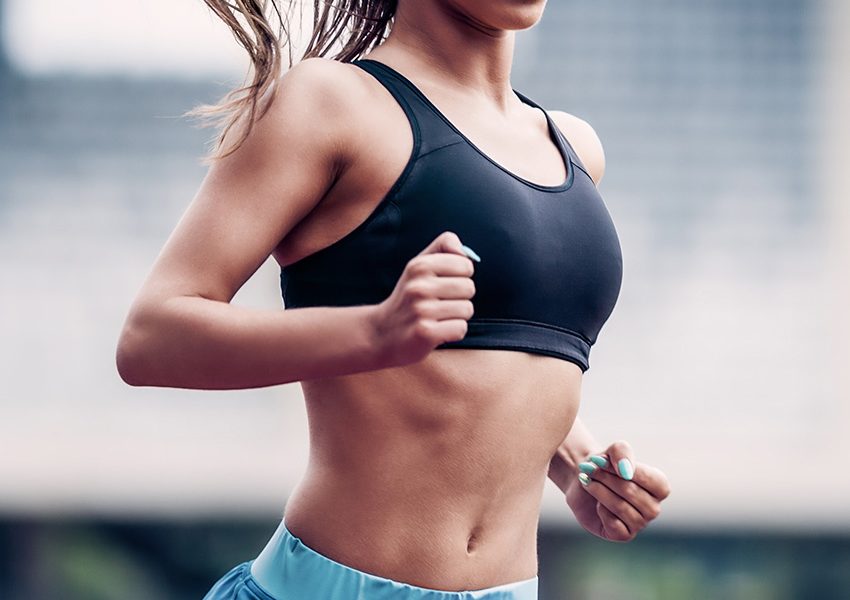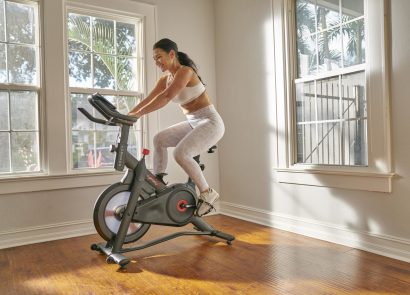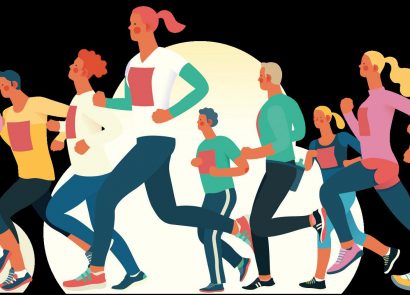A top athlete will have the support of a team of specialists to help them perform at their best. Whilst not all of us are lucky enough to have these services on tap, we can learn a thing or two from those at the top of their game. There are lots of different practices and principles an athlete uses in their training plan, which you can apply to your own fitness plan. Use these tactics to help you train more efficiently and effectively, and ultimately, perform better.
-
Periodisation This is the process of splitting the year into four-week blocks each with a specific emphasis. Start the year by building your aerobic base and muscular endurance through long-slow-distance runs and circuit training. Later in the year focus on increasing your stride length by incorporating flexibility training. You might then concentrate on increasing your race pace by doing high intensity intervals. Make sure that each block helps to move you closer to being in top shape for your main competition or goal.
-
Goal setting Decide what you want to achieve in the next 12 months and focus your efforts on accomplishing this. Whilst breaking a world record may be a little ambitious, setting a new PB or completing a milestone distance is perfectly achievable. Break your main goal down into 4-6 smaller targets that will keep you on track and motivated to achieve your main goal. Get yourself a training diary to record these goals and log your progress. Use your diary to make any necessary changes to your programme if you feel you are doing too much or too little.
-
Nutrition and hydration The food you eat provides the energy to train and compete, as well as fuelling the recovery process. The longer or more intense your training the more cals over the recommended daily 1500- 2000 you’ll need. Carbs are rightly associated with providing energy for runners but protein is often overlooked. Runners need a little more protein than the average individual, as it provides the building blocks for recovery, as well as being used as a source of energy during longer runs. Ensure you eat wholegrain sources of carbs and veg and lean protein with each meal.
-
Recovery Proper recovery between runs will help keep you injury-free and able to perform at your best. Think of recovery as another aspect of your training, and have a strategy. The recovery process starts with a proper cool-down, where you gradually reduce the exercise intensity and stretch the muscles you have been using. A post-exercise ice bath will flush out waste products and prevent inflammation, and has been shown to boost recovery, particularly during periods of intense training. Fill the bath with two or three bags of ice and top up with cold water up to your waist. Lie back and think warming thoughts for the next 10 minutes. Sports massage will also help recovery, but you don’t always have to see a therapist for treatment. Use a foam roller to loosen tight legs (especially the IT band which runs down the outer thigh) and a tennis ball to break down knotted muscles in the shoulders and buttocks.
-
Gym work An athlete’s training will involve more than just track sessions. Strength training is used year round to enhance performance and reduce the risk of injury. Aim to include at least one gym session a week, focusing on the upper and lower body, as well as the core. The time spent doing supplemental forms of training can pay off to a greater extent than extra time spent running. You might also consider Pilates, yoga and plyometrics depending on the goals of each block of training.
-
Technique Developing a better running style can shave precious seconds off your PB as you’ll be using your energy more efficiently. Whilst you may not be able to employ a full-time coach, joining an athletics club or attending group coaching sessions will give you the opportunity to have your technique assessed. Run3D in Oxford (noc.nhs.uk/run3D) offers the UK’s first three dimensional gait analysis with the most accurate assessment of your running style currently available. It provides an insight, previously only available to athletes, which could make a huge difference to your running efficiency and performance.
-
Getting your right kit A good performance depends on using the right tools for the job, during both training and competition. The most important piece of running kit is your trainers so spend time trying on different styles.
The ultralightweight adidas adios shoes (£85.00, adidas.com/running) feature a sole from tyre manufacturer Continental to offer unrivalled grip, especially in the wet, and excellent energy return from each stride. A good sports bra is another essential piece of kit. Try the Run Bra from Shock Absorber, designed specifically for runners and scientifically proven to reduce up to 78 percent of bounce. -
Cross training Incorporating other forms of aerobic training into your programme can help prevent injury and loss of motivation. Running works your muscles in a particular way and over time this can lead to an overuse injury. Doing another form of training still allows you to work on your fitness but gives your mind and body a break from running. Include a cross training session every week or fortnight, either as a recovery or high intensity interval workout. Swimming or rowing are excellent alternatives as they work both the upper and lower body in a completely different way to running.
-
Get scientific Accurately gauging how hard you are working during each session is crucial to making progress towards your goals. You may keep track of your weekly mileage and/or times, but take things a step further by monitoring pace and gradients climbed. Plan your run beforehand using mapping software, assessing the incline of any hills when charting your route. Use a wrist GPS monitor to measure your pace and distance and upload the data to your computer when you get home. Compare your performances over time and use these to make any adjustments to your programme.
-
Test yourself Factor regular fitness assessments into your training plan. Select those tests that are most appropriate to your goals and schedule three or four bouts of testing at regular intervals during the year. There are a number of simple tests you can conduct yourself or at your local gym; resting heart rate, waist circumference, sprint performance, 12-min Cooper run, sit and reach, and 10 rep max. The results will give you an idea of how you are progressing in each aspect of running fitness and where you need to make any adaptations to your plan. Aside from field-based tests you may be able to have a more detailed assessment at a specialist sports science lab. Private testing clinics are located in some towns, and it’s worth enquiring at your local university, which may have testing facilities available for public use.



















